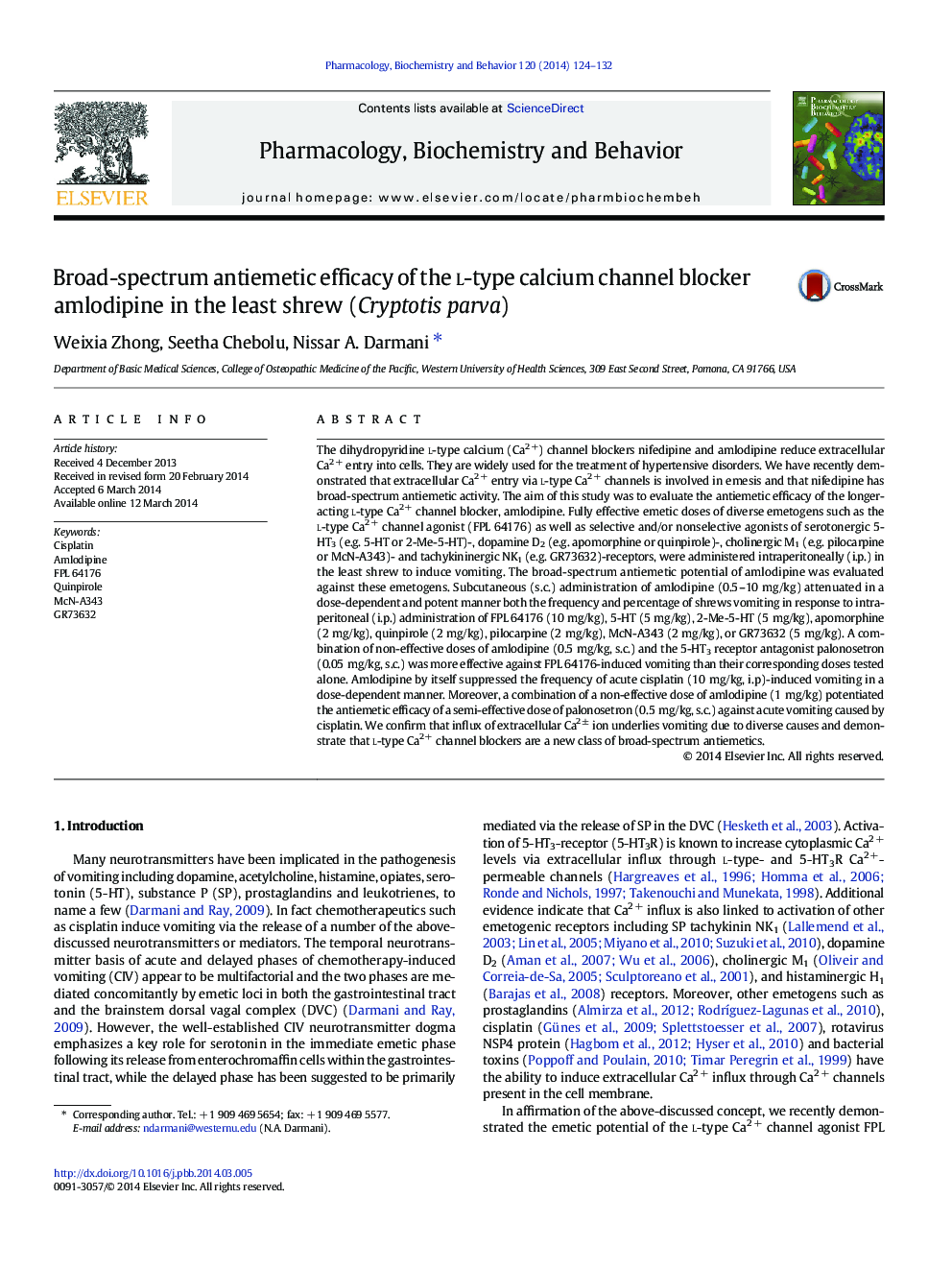| Article ID | Journal | Published Year | Pages | File Type |
|---|---|---|---|---|
| 2012946 | Pharmacology Biochemistry and Behavior | 2014 | 9 Pages |
•Amlodipine suppresses vomiting caused by diverse emetogens.•Amlodipine potentiates the antiemetic efficacy of 5-HT3 antagonists•Antiemetic efficacy differences exist between amlodipine and nifedipine.•Extracellular Ca2 + influx underlies vomiting caused by diverse emetogens.•l-type Ca2 + channel blockers are a new class of broad-spectrum antiemetics.
The dihydropyridine l-type calcium (Ca2 +) channel blockers nifedipine and amlodipine reduce extracellular Ca2 + entry into cells. They are widely used for the treatment of hypertensive disorders. We have recently demonstrated that extracellular Ca2 + entry via l-type Ca2 + channels is involved in emesis and that nifedipine has broad-spectrum antiemetic activity. The aim of this study was to evaluate the antiemetic efficacy of the longer-acting l-type Ca2 + channel blocker, amlodipine. Fully effective emetic doses of diverse emetogens such as the l-type Ca2 + channel agonist (FPL 64176) as well as selective and/or nonselective agonists of serotonergic 5-HT3 (e.g. 5-HT or 2-Me-5-HT)-, dopamine D2 (e.g. apomorphine or quinpirole)-, cholinergic M1 (e.g. pilocarpine or McN-A343)- and tachykininergic NK1 (e.g. GR73632)-receptors, were administered intraperitoneally (i.p.) in the least shrew to induce vomiting. The broad-spectrum antiemetic potential of amlodipine was evaluated against these emetogens. Subcutaneous (s.c.) administration of amlodipine (0.5–10 mg/kg) attenuated in a dose-dependent and potent manner both the frequency and percentage of shrews vomiting in response to intraperitoneal (i.p.) administration of FPL 64176 (10 mg/kg), 5-HT (5 mg/kg), 2-Me-5-HT (5 mg/kg), apomorphine (2 mg/kg), quinpirole (2 mg/kg), pilocarpine (2 mg/kg), McN-A343 (2 mg/kg), or GR73632 (5 mg/kg). A combination of non-effective doses of amlodipine (0.5 mg/kg, s.c.) and the 5-HT3 receptor antagonist palonosetron (0.05 mg/kg, s.c.) was more effective against FPL 64176-induced vomiting than their corresponding doses tested alone. Amlodipine by itself suppressed the frequency of acute cisplatin (10 mg/kg, i.p)-induced vomiting in a dose-dependent manner. Moreover, a combination of a non-effective dose of amlodipine (1 mg/kg) potentiated the antiemetic efficacy of a semi-effective dose of palonosetron (0.5 mg/kg, s.c.) against acute vomiting caused by cisplatin. We confirm that influx of extracellular Ca2 ± ion underlies vomiting due to diverse causes and demonstrate that l-type Ca2 + channel blockers are a new class of broad-spectrum antiemetics.
